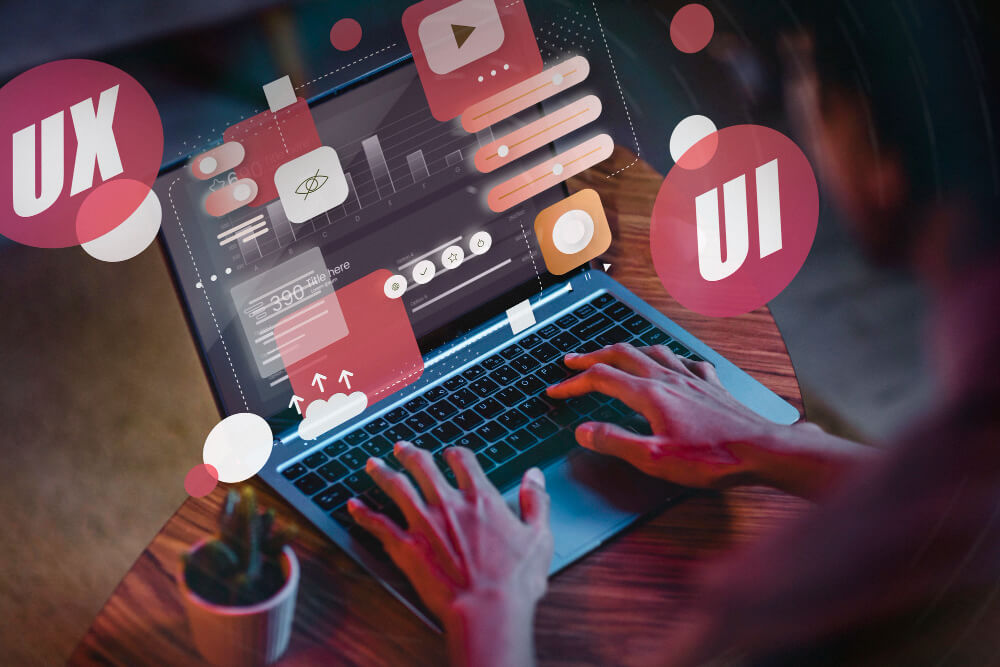The digital landscape is ever-evolving, with new design trends. Emerging each year that redefine user experience and engagement. In 2024, we expect exciting website design trends that will shape the future of web design. These trends will enhance how users interact with websites. From minimalist aesthetics to interactive elements.
Here are the Top 10 Website Design Trends to Watch in 2024.
1. Minimalist Designs
Minimalism continues to dominate the design world, emphasizing simplicity and functionality.
- Clean Layouts: Minimalist designs use ample white space to create a clean, uncluttered look.
- Focused Content: The focus remains on the essential content. And key messages by eliminating unnecessary elements.
This trend enhances user experience by reducing distractions and improving navigation. Websites like Apple and Google exemplify minimalist design with their sleek, user-friendly interfaces.
2. Dark Mode
Dark mode has gained popularity for its aesthetic appeal and functional benefits.
- Eye Comfort: Reduces eye strain in low-light conditions.
- Battery Efficiency: Extends battery life on OLED screens.
Dark mode provides a modern and elegant look. While enhancing readability and reducing eye fatigue. Popular apps like Twitter and Instagram offer dark mode options. Users can toggle according to their preferences.
3. Micro-Interactions
Micro-interactions add a layer of interactivity and feedback that engages users.
- Subtle Animations: Small animations that respond to user actions. Hovering over a button or completing a form.
- Feedback Loops: Provide instant feedback to users, enhancing usability.
These tiny animations make the user experience more intuitive and enjoyable. For instance, the “like” button animation on Facebook for better user interactions.
4. 3D Elements
The use of 3D elements creates a sense of depth and realism in web design.
- Interactive Graphics: 3D models that users can interact with
- Visual Appeal: Enhances aesthetic appeal and engagement.
3D elements bring a dynamic and immersive experience to websites. E-commerce sites like Nike use 3D product visualizations. It helps to provide a detailed view of their products.
5. Voice User Interface (VUI)
VUI is becoming increasingly relevant with the rise of smart speakers. And voice-activated assistants.
- Voice Commands: Users can navigate the site or perform actions using voice commands.
- Accessibility: Enhances accessibility for users with disabilities.
VUI simplifies interactions and makes websites more accessible. For example, Amazon’s Alexa integration allows users to search for products using voice commands.
6. Augmented Reality (AR) Integration
Augmented Realilty integration provides an interactive and immersive experience. By overlaying digital content in the real world.
- Try Before You Buy: Virtual try-ons for products like clothing or furniture.
- Interactive Experiences: Engaging AR content that enhances the user’s environment.
AR integration transforms how users interact with websites. How to make online shopping and browsing more engaging. IKEA’s AR app allows users to visualize furniture in their own homes before making a buy.
7. Bold Typography
Bold typography makes a statement and grabs the user’s attention.
- Large Fonts: Use of oversized and bold fonts to emphasize key messages.
- Unique Typefaces: Custom and creative fonts that enhance brand identity.
Bold typography enhances readability and helps convey the brand’s personality. Websites like Medium use bold typography to make headlines stand out. And improve the reading experience.
8. Neumorphism
Neumorphism combines skeuomorphism and flat design to create a soft, realistic look.
- Soft Shadows: Use of subtle shadows to create a 3D effect.
- Minimalist Aesthetic: Clean and modern design that enhances visual appeal.
Neumorphism provides a fresh and modern look that enhances the user interface. It’s particularly effective for creating intuitive and visually appealing buttons and cards.
9. Scrolling Transformations
Scrolling transformations create dynamic and engaging user experiences.
- Parallax Effects: Layers that move at different speeds to create a 3D effect.
- Animated Transitions: Smooth transitions that guide users through the content.
Scrolling transformations make navigation more interactive and visually appealing. Websites like Apple use scrolling animations to showcase product features engagingly.
10. Sustainable and Inclusive Design
Sustainable and inclusive design focuses on creating environmentally friendly and accessible websites.
- Eco-Friendly Practices: Optimizing websites to reduce energy consumption and carbon footprint.
- Inclusive Design: Ensuring websites are accessible to all users, including those with disabilities.
Sustainable and inclusive design practices enhance user experience. it makes websites more accessible and environmentally responsible. Websites like Patagonia focus on eco-friendly design practices, reflecting their commitment to sustainability.
Conclusion
The top website design trends for 2024 reflect a blend of functionality and UX. From minimalist designs and dark mode to micro-interactions and augmented reality. These trends are set to redefine how users interact with websites. By staying ahead of these trends and incorporating them with your web design strategy. You can create engaging and modern websites that attract and keep users.
Investing in professional web design services can help you leverage these trends. It creates a website that stands out in a competitive digital landscape. Whether you’re a business owner, a designer, or a developer, embrace. These trends will ensure your website is relevant and appealing in 2024 and beyond.
